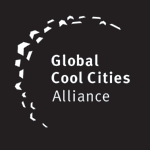The Cool Roofs Challenge is an unprecedented $2 million initiative comprising an outcome-based $1 million challenge prize and $1 million of grant pool of up to ten $100,000 grants to support teams with their entry to the challenge. The final prize will be awarded to the team that has the most effective, sustainable and replicable model for scaling up the deployment of cool roofs, and has evidenced this approach by demonstrating 1 million square meters of cool roofing in a specific geographic area while meeting certain standards and criteria.
Interested in applying? Click here. Boost Grant applications open on January 20th, 2019.
The challenge seeks to achieve the following outcomes:
Outcome 1: Close the cooling access gap in critically affected countries. Reflective, “cool” roofs and walls are an essential first strategy to improving cooling access. These interventions reduce base and peak demand for cooling demand in mechanically conditioned buildings. For the vast majority of buildings that will not be mechanically cooled, cool surfaces are one of the few strategies that can deliver meaningful cooling access by reducing mean indoor temperatures at a building scale and mean ambient air temperatures when deployed on a community- and city-wide scale. The use of quality, cost effective product and effective deployment through skilled workforce is a key to success.
Outcome 2: Send a clear signal to the market and policy developers that there is global demand for cool roof products. The competitive grant pool will be the largest ever to focus on cool roofs and thermal comfort and will build relationships in large, but previously untapped, markets. Visible and high profile deployments, ideally supported with performance data, will bring buy-in from market and governments.
Outcome 3: Create the conditions for sustainable, accelerated deployment of cool surfaces in countries with a large gap in access to cooling. The initiative will encourage the development of policies, programs, and markets to deliver over 1 million cool buildings across target countries and create jobs. In countries with high penetration of mechanical space cooling, the program will save hundreds of millions of dollars and avoid hundreds of thousands of tons of greenhouse gas and ozone precursor emissions.

